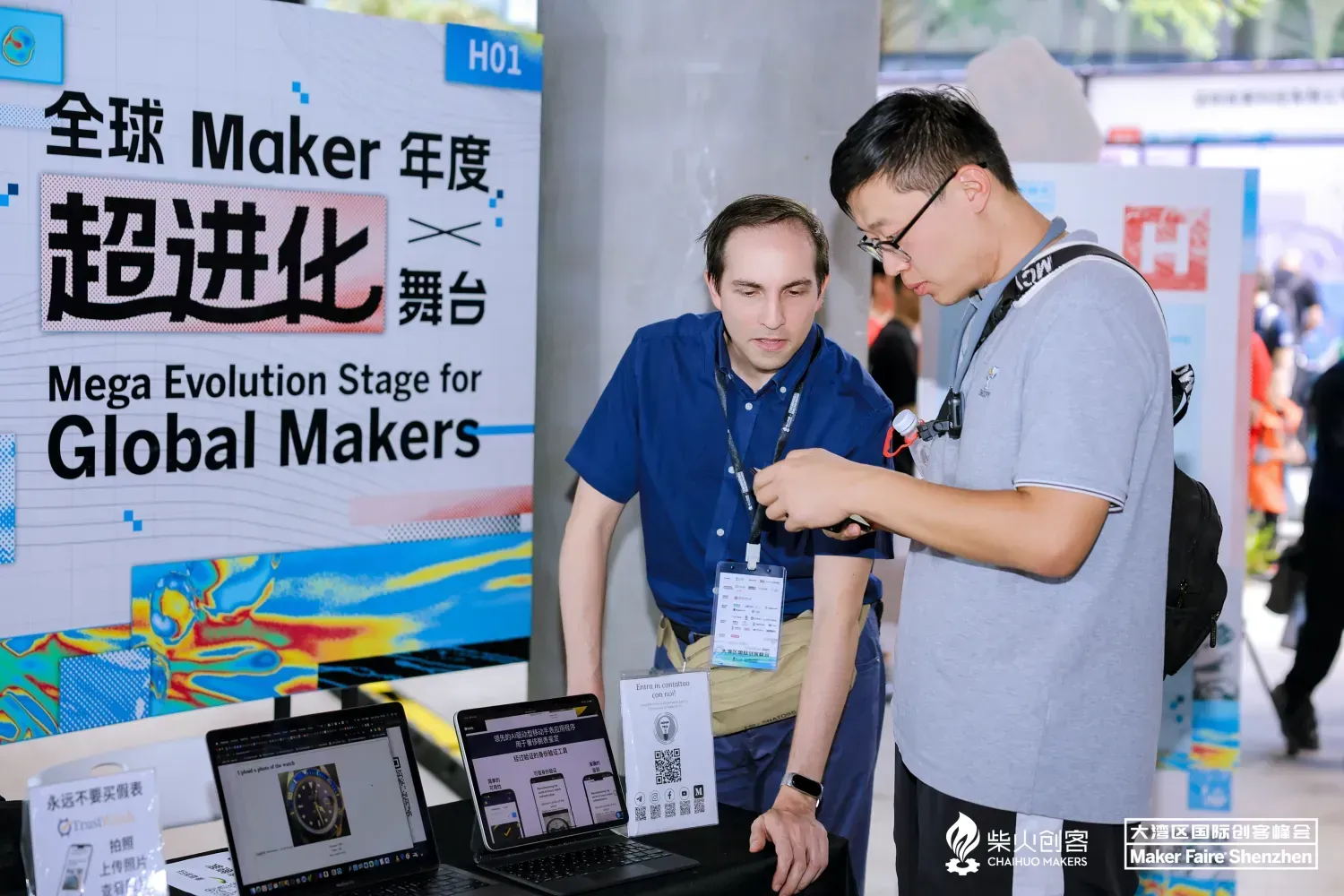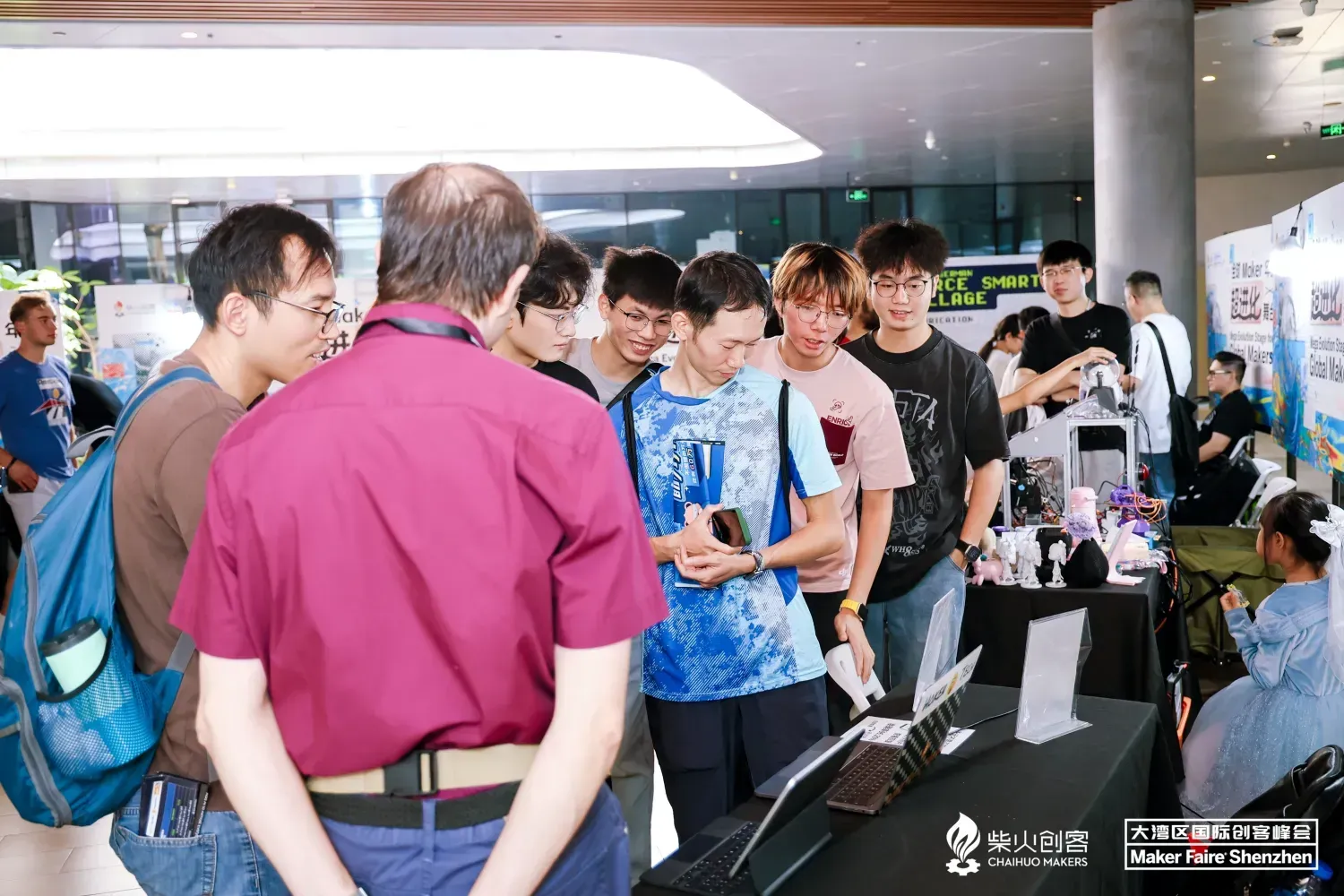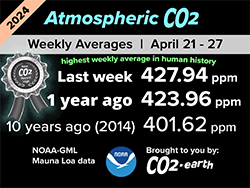AI That Spots Fake Luxury Watches in Seconds — Our TrustWatch Demo at Maker Faire Shenzhen 2025
TrustWatch is our AI that evaluates luxury watch authenticity using images, delivering a confidence score and recommended next steps.
We demoed it publicly at Maker Faire Shenzhen 2025, engaging a highly technical audience of makers, founders, and engineers.
Key takeaways: strong demand from marketplaces and dealers, enthusiasm for API integrations, and clear appetite for rapid, photo-first screening.
Next: expanding brand coverage, improving macro-surface analysis, and releasing early partner APIs.
Welcome to Hoken Tech.
Shenzhen, China — We were thrilled to join Maker Faire Shenzhen 2025 (Nov 15–16, Vanke Cloud City) and debut TrustWatch, our AI system that assesses a single photo to determine whether a luxury watch is authentic or counterfeit. Over two days, we met an incredible global maker community, ran live demos, and gathered invaluable feedback from collectors, dealers, and technologists.
Why this matters: Counterfeits are more sophisticated than ever. TrustWatch uses computer vision to analyze micro-details — typography, finishing, proportions, crown guards, serial placements, dial printing, lume patterns — and compares them against brand-specific standards. The goal is simple: reduce costly mistakes and build trust in high‑end watch commerce.
Our presence and demo
What we showed: TrustWatch live checks from a single image (phone or camera capture). Attendees snapped or uploaded watch photos; TrustWatch returned a score for the fake or genuinity of the watch, or say the photo is not a watch.

Who tried it: Collectors, dealers, watchmakers, students, and engineers working on vision systems and edge AI. The demo sparked great conversations about data curation, bias, and responsible deployment.
Feedback themes:
Demand for “proof” overlays — highlighting the exact regions driving the decision.
Interest from marketplaces, pawn/buy-back, and insurance for intake triage.
Requests for an API and batch verification.
Concern for privacy, brand IP, and responsible use — topics we address below.
How TrustWatch works (at a glance)
Image intake: Users upload or snap photos from multiple angles to capture cases, dials, bezels, engravings, and bracelets.
Vision analysis: A computer-vision backbone detects structure and typography patterns and evaluates surface and finishing cues; results are combined into a confidence score.
Output and guidance: The system show a score if the watch is fake or genuine.
Continuous learning: As we expand brand coverage and references, model quality improves, especially on nuanced variants and limited editions.
Who cared — and why
Marketplaces: Need scalable photo-first screening to reduce intake fraud and triage to human experts only when necessary.
Dealers: Want fast, on-the-go assessments from shop floors and shows to prioritize deeper inspection.
Collectors: Value instant signals on listings and trades, plus guidance on which extra photos to request.
What we learned on the show floor
Speed matters: People respond to clear, sub-minute assessments that tell them what to do next, not just “pass/fail.”
Angle guidance helps: A small checklist of “priority views” (e.g., dial macro, caseback engraving, clasp) meaningfully boosts confidence.
Explainability is key: Even a short rationale — what the model saw and why — builds trust and accelerates decisions.

Where TrustWatch is going next
Brand/model coverage: Broader references, better handling of variants and production-year differences.
Image quality robustness: Improved tolerance for mixed light, reflections, and textured backgrounds.
Workflow integrations: Private beta APIs for marketplaces, POS systems, and inventory tools.
Expert loop: Structured handoff to human watchmakers when cases require specialist inspection.
An AI system that evaluates the authenticity of luxury watches from images and returns a confidence score plus next steps.
Accuracy is 96,20% but depends on brand/model coverage and photo quality. Confidence scores reflect the system’s certainty and indicate when more images or expert review are recommended.
Initial coverage focuses on major luxury brands and commonly traded references, there are 8 different brands and over 1500 different models. Coverage is expanding — contact us for the latest list.
Well-lit images with minimal reflections. Helpful angles include dial macro (indices, typography).
No. TrustWatch accelerates triage and surfaces potential issues; complex or ambiguous cases still benefit from expert inspection.
Yes. We’re preparing a private beta API for enterprise partners. Reach out to discuss use cases and data protections.
Images are processed for assessment and are not kept.
nft, hoken tech, blockchain, cryptoart, eos, nft art, artificial intelligence, ai, watch authentication, crypto artist, nfts, web3, nft game, web3 game, videogame, nft distributor, videogame blockchain







